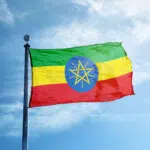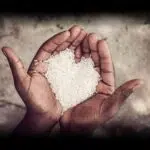International Day of Action for Women’s Health (also known as International Women’s Health Day) is marked on May 28 by women and health organizations globally to educate people about women’s health and rights. The day fights against the social and gender disparities that violate women’s rights. It is alarming that these disparities manifest in various ways and operate at multiple levels. These include women’s rights to their bodies and to health, as well as to equality and non-discrimination. This day provides women with more information about sexual and reproductive rights and control over their reproductive health.
History of International Day of Action on Women’s Health
Members of the Women’s Global Network for Reproductive Rights (W.G.N.R.R.) in South Africa met in 1987 and then established International Day of Action for Women’s Health. The South African government formally recognized it in 1999. Finally, the establishment of International Women’s Day revealed an opportunity to raise awareness of the significance of women’s rights to sexual and reproductive health.
Sexual and reproductive health and rights education for women, regardless of considerations such as religion and age, is critical. International Day of Action for Women’s Health highlights the most blatant forms of contempt for autonomy: coercion, discrimination, and violence that many women and girls face in our cultures today. These alone should be enough to motivate everyone to take concrete action.
Yet, there is a lack of effort to put safeguards in place to avoid perpetuating unhealthy systems. In addition to the people in their immediate environment, the political and economic systems that build our society plays a significant role in establishing safe places for women and girls. Consequently, it follows that social transformation requires political action to promote equality and mutual respect in interpersonal interactions and eradicating violence. Women’s health can be better ensured by empowering women collectively and as individuals. A key point is addressing the structural factors contributing to their social exclusion and limitations to their ability to make independent decisions for themselves.
International Day of Action on Women’s Health timeline
Planned Parenthood begins operations in Brownsville, New York, United States.
To educate the public about contraception, Margaret Sanger launches “Birth Control Review” magazine.
Birth control pills are introduced to women.
The first modern female condom is produced.
International Day of Action on Women’s Health FAQs
What is necessary to access sexual and reproductive health?
It is critical to have access to reliable, unbiased, and up-to-date sexual and reproductive health information. In addition, services such as vaccination, cervical screening tests, and testing for sexually transmissible infections are also necessary.
What steps can I take to achieve optimal well-being?
Access to sexual and reproductive healthcare and quality knowledge about healthy living can all assist women in attaining optimal health and well-being.
Is it possible for a woman to become pregnant and breastfeed simultaneously?
Yes. Even though breastfeeding may delay menstruation, it is still possible to become pregnant. Ovulation will occur before your menstrual cycle begins again, so follow your doctor’s advice on the best birth control option.
How to Observe International Day of Action on Women’s Health
Educate people
Highlight the subject of women's rights to health care, making women aware of medical facilities, contraception, and other support, protecting women from HIV/AIDS, and securing access to safe and legal abortion facilities. All these issues impact women’s health, hence must be raised, and addressed.
Advocate for women’s reproductive rights
People, including the woman's sexual partner, family members, the physician or midwife, and peers, all play a role in influencing her reproductive health decisions to varying degrees. You may support and campaign for women's freedom to make their own decisions about their reproductive health.
Call for safe and legal abortions
Every year, countless women die from unsafe and unhygienic abortions — preventable if abortion is legal. Use your voice and call for safe and legal abortions in your state or country.
5 Important Facts About Women’s Reproductive Health
Sexual and reproductive health
It encompasses the right to positive and healthy relationships, health services that are accessible, safe, and equitable, access to reliable information, effective and inexpensive means of contraception, and timely support and assistance in connection to unwanted pregnancy.
It’s tied to different life stages
Different life stages correlate to various aspects of female sexual and reproductive health — these include the menstrual cycle, the ability to become pregnant, sexually transmitted infections and chronic health issues (such as polycystic ovary syndrome), and the menopausal transition.
It’s essential for overall well-being
A healthy sexual and reproductive system is essential for women's holistic health and well-being.
It includes pregnancy
That decision-making power is essential for women, including whether or not to have children.
Safe sex practices
Safe sex practices are critical for women's sexual and reproductive health of sexually active women of all ages.
Why International Day of Action on Women’s Health is Important
It allows for open conversations
Each year, women and health organizations can focus on topics affecting women that are left uncovered. Such examples include access to quality healthcare, HIV/AIDS and how it affects women, access to contraceptives, access to safe and legal abortion, how governments can do more to ensure that women are safe, and so on. Some of these topics are usually considered taboo. But we can have open and honest conversations on this day.
It adapts to locality
The day allows every organization or individual to mobilize their communities behind a priority issue suited to the local circumstances. Solutions must be adapted to the locality and the issues on hand and not treated as a one size fits all approach.
It spreads awareness
Knowledge of sexual and reproductive health helps in preventing unwanted and high-risk pregnancies. Such knowledge, as well as prenatal and postnatal care, saves women's lives daily. Health care for the sex and reproductive organs includes preventing and treating sexually transmitted illnesses like HIV/AIDS.
International Day of Action on Women’s Health dates
| Year | Date | Day |
|---|---|---|
| 2026 | May 28 | Thursday |
| 2027 | May 28 | Friday |
| 2028 | May 28 | Sunday |
| 2029 | May 28 | Monday |
| 2030 | May 28 | Tuesday |















